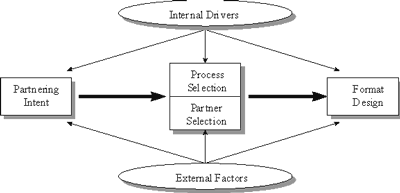Setting up an International Manufacturing Joint Venture in China
Aims
- enhance our understanding of the roles played by international joint ventures (IJVs) during the process of internationalisation
- identify key decision areas of alliance formation and map decision sequences which have helped to optimise the design of the collaboration agreement
- develop an analytical framework for capturing the best practice of successful joint venture formation and explore guidelines for the design of new joint ventures
Background
The importance of international strategic alliances, especially IJVs, is growing in the present context of intensified global competition. Reflecting their increased prominence in the business world, the number of studies on IJVs has increased markedly. However, little attention has been paid to how the initial alliance strategy can be implemented. Previous research is not adequate in explaining how to successfully tackle the issues that may rise from the setting-up of a manufacturing joint venture. A review of literature confirms that tools for analysing this kind of inter-firm collaboration are rare. It is clear that a systematic approach to alliance formation is essential for managers to create a successful joint venture operation and ensure an effective relationship.
In order to address this inadequacy, the CIM has been conducting research on international joint ventures since 1996. The study has utilised case study and expert interview methodologies and focused on those joint ventures established by MNCs in China. Observations and interviews have been conducted in 16 foreign funded enterprises in China. Evidence from these cases clearly shows that an ad hoc approach to alliance formation may cause ìbugsî in partnering agreements and lead to strategy implementation problems. Through a cross-industry analysis a preliminary process model has been developed with an emphasis on how to set up manufacturing joint ventures in China.
This project will continue to develop relevant decision-making tools. Moreover, the research interest will be extended to some related subjects, such as market entry strategy. In line with the Centre's approach, the output of this research will be delivered to managers involved in international manufacturing activities, in the form of workbooks or presentations.
Research approach
This work starts with a review of international manufacturing, collaboration strategy and international strategic alliance literature. In order to identify the effective processes of alliance decision-making and corresponding business processes, a series of case studies has been undertaken to provide a rich context and data inputs of joint venture formation and operation. The inputs for this research normally come from two sources:
- documents (JV contracts, feasibility study reports, company newsletters etc.)
- interviews (with negotiators and managers)
In parallel, guidelines for pre-alliance collaborative analysis will be constantly refined and an analytical method developed to cater to practitioner's needs.
Preliminary framework

Outcomes
- review of current joint venture formation and management practice
- new structured approach and tools to assist future alliance strategy formulation and JV formation design
- self-diagnosing workbook on the formation and control of joint ventures
Researcher
Philip Pu Zhai
Further information
Yongjiang Shi E: ys@eng.cam.ac.uk









